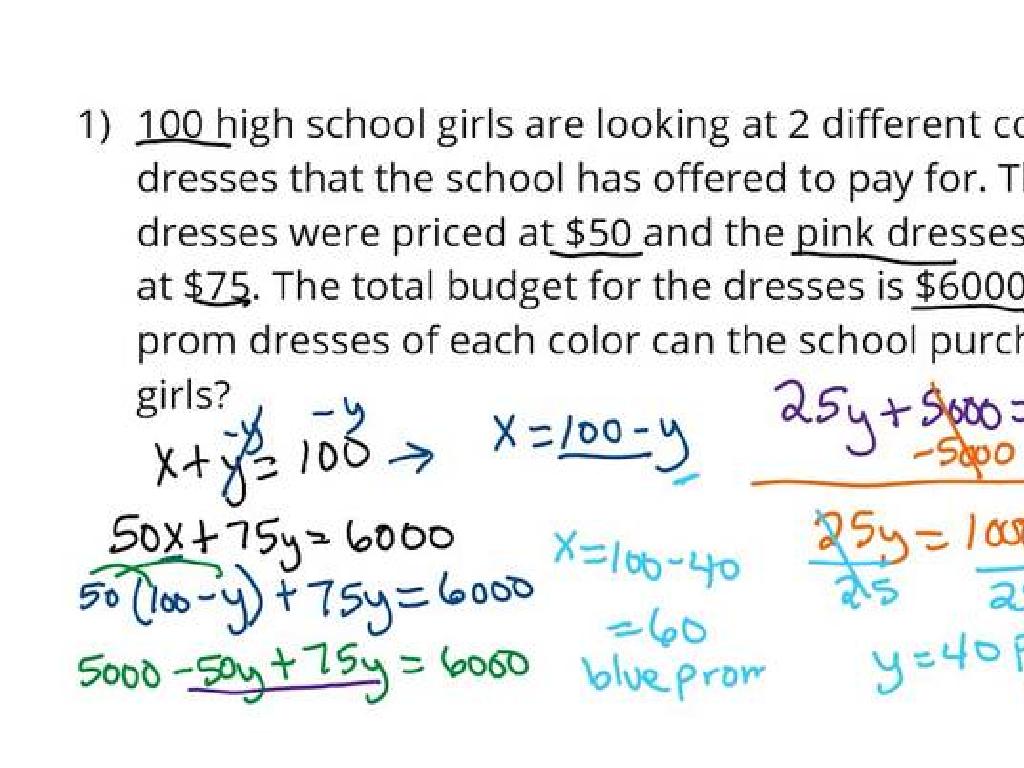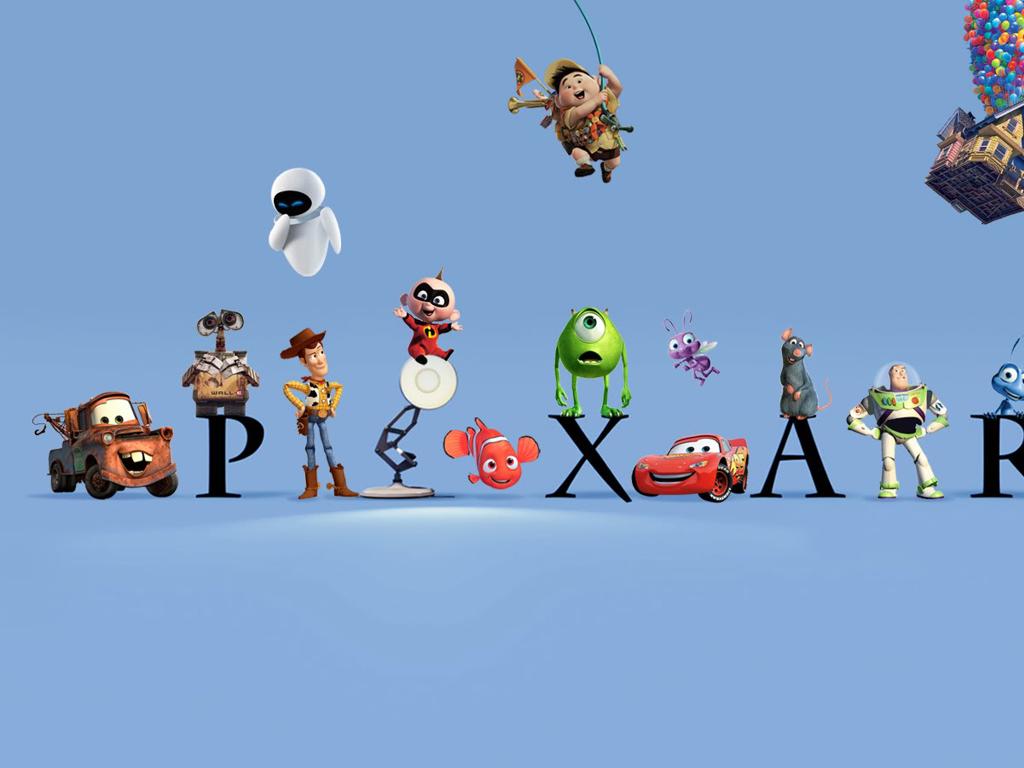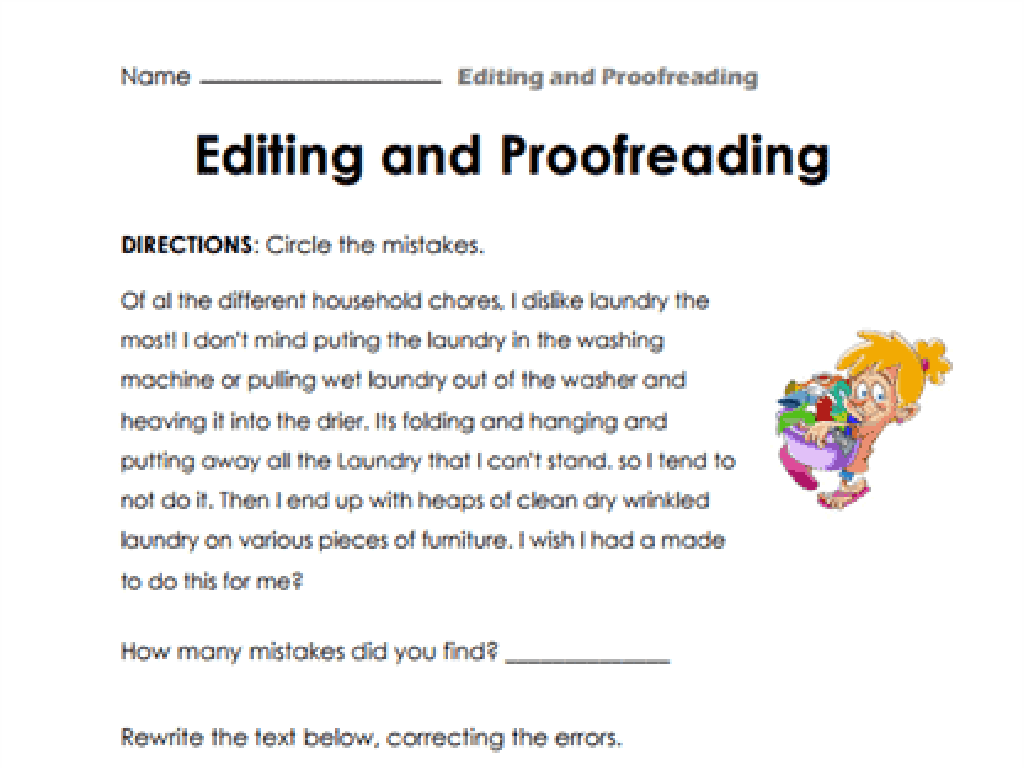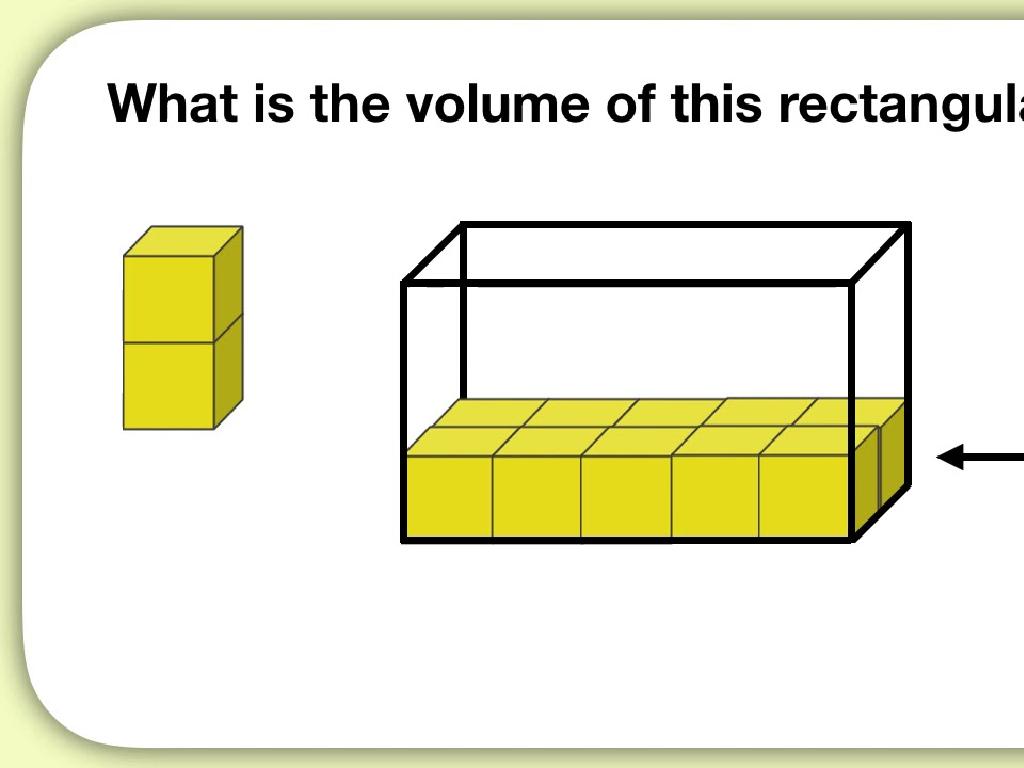Choose The Picture That Rhymes With The Word
Subject: Language arts
Grade: Second grade
Topic: Rhyming
Please LOG IN to download the presentation. Access is available to registered users only.
View More Content
Welcome to Rhyming Words!
– Greetings, Super Second Graders!
– Exploring words that sound alike
– Words like ‘cat’ and ‘hat’ sound similar.
– Rhymes in reading and poetry
– Rhyming helps with reading fluency and writing poems.
– Get ready for rhyming fun!
|
This slide is designed to introduce second graders to the concept of rhyming words in a fun and engaging way. Start by greeting the students enthusiastically to capture their attention. Explain that rhyming words are words that have the same ending sound. Emphasize the importance of rhyming in reading fluency and poetry creation. Encourage the students to listen for rhymes in songs and stories as a part of their daily activities. Prepare a list of simple rhyming words to demonstrate the concept. Plan interactive activities where students can match words that rhyme or create their own rhyming pairs. This will set the stage for a fun and educational session on rhyming words.
Understanding Rhyming Words
– What does ‘rhyme’ mean?
– Words that sound the same at the end
– ‘Cat’ and ‘hat’ rhyme
– They both have the same ‘at’ sound at the end
– Words ending with ‘at’
– Like ‘bat’ and ‘rat’ also rhyme with ‘cat’
– Find a rhyme for ‘dog’
– Think of a word that ends with the ‘og’ sound
|
This slide introduces the concept of rhyming to second graders. Start by explaining that rhyming words have the same ending sound. Use ‘cat’ and ‘hat’ as clear examples, and show pictures to visually reinforce the concept. Encourage the students to think of other words that end with ‘at’ and share them with the class. Then, challenge the students to come up with a word that rhymes with ‘dog’. This activity will help them understand rhyming patterns and practice phonetic skills. For the class activity, you can prepare a set of pictures representing different words and ask students to match the ones that rhyme.
Matching Rhymes: Find the Pairs
– Rhymes are everywhere!
– Observe pictures, hear their names
– Look at an image and say the word aloud
– Match endings that sound the same
– Find the picture with a matching sound
– Practice makes perfect
|
This slide is designed to engage second-grade students in the concept of rhyming by using visual and auditory clues. Start by explaining that rhymes are pairs of words that have the same ending sound. Encourage students to look at pictures and listen to the names of the items shown to identify rhyming pairs. For example, show them a picture of a cat and a hat, and ask them to listen to how ‘cat’ and ‘hat’ end with the same sound. This activity will help them develop phonemic awareness, which is crucial for reading skills. As they practice, they’ll become more adept at recognizing rhyming patterns, which will also enhance their ability to predict and spell words. During the next class, have a fun activity where students can match pictures with rhyming names and share their matches with the class.
Rhyme Time Practice
– Let’s play a rhyming game
– Listen to the word I say
– Find the picture that rhymes
– If I say ‘cat’, choose a picture like ‘hat’ that sounds similar
– Get ready to match them up
|
This slide introduces a fun and interactive rhyming game to help second graders practice their phonemic awareness. The teacher will say a word out loud, and the students will choose a picture from a selection that rhymes with the spoken word. This activity encourages active listening and critical thinking as students discern which words sound alike. It’s a great way to reinforce the concept of rhyming in a way that’s engaging for young learners. For the activity, prepare a set of pictures that have clear rhyming counterparts, and ensure that each student has a chance to participate. Possible words to use include ‘dog – log’, ‘fish – dish’, ‘ball – wall’, and ‘tree – bee’.
Rhyme Time: Which Picture Rhymes with ‘Sun’?
– Hear the word: ‘Sun’
– Find a rhyming picture
– Look for a word that sounds like ‘sun’
– Choose the correct image
– Is it bun, pen, or fan?
– Explain your choice
– Share why it rhymes with ‘sun’
|
This slide is designed for a class activity to help second-grade students understand and practice the concept of rhyming. The word ‘sun’ is given, and students are asked to select a picture that rhymes with it from multiple options. The teacher should prepare images of objects like a bun, pen, and fan beforehand. During the activity, encourage students to say the word ‘sun’ out loud and then each of the possible rhyming words to determine which sounds most similar. After making their selection, ask them to explain why they chose that particular picture, reinforcing their understanding of rhyming words. This exercise will enhance their phonemic awareness and ability to recognize rhyming patterns.
Rhyming Pairs Game
– Let’s play a rhyming game
– I’ll show a word, find the rhyme
– If I show ‘cat’, you might choose ‘hat’
– Correct rhymes earn points
– Have fun and learn together
|
This interactive game is designed to help students recognize and form rhyming pairs, reinforcing their understanding of phonemic awareness. Display a word visually to the class and have a selection of pictures available. Each student will choose the picture that rhymes with the displayed word. Correct matches earn points, turning learning into a fun competition. Encourage participation and celebrate correct answers to build confidence. Possible variations of the game could include team play, timed rounds, or using props. This activity not only reinforces the concept of rhyming but also aids in vocabulary development and phonetic pronunciation.
Class Activity: Rhyme Hunt
– Pair up for a rhyme adventure
– Find classroom items that rhyme
– Look around and think of words that sound similar
– Each pair will share their findings
– Listen and learn from others
– Pay attention to your classmates’ rhymes too!
|
This interactive activity is designed to encourage students to work collaboratively while exploring rhyming words in a fun and engaging way. Have the students pair up and search the classroom for items that rhyme with each other, such as ‘clock’ and ‘sock’ or ‘book’ and ‘hook’. After the hunt, each pair will present their rhyming items to the class, which will help reinforce their understanding of rhymes and allow them to practice speaking skills. As a teacher, facilitate the activity by providing guidance on what rhymes are and offering examples if needed. Make sure to monitor the pairs to ensure that all students are participating and to help with any difficulties in finding rhyming pairs. After the activity, discuss with the class why rhyming is important in language arts, such as its role in poetry, songs, and reading fluency.
Rhyme Time Roundup
– Excellent rhyming work today!
– Rhymes boost reading and writing skills
– Rhyming teaches patterns in words, making it easier to remember and spell them.
– Listen for rhymes in daily life
– Rhymes are all around us in songs, stories, and conversations.
– Keep practicing your rhymes!
|
As we wrap up today’s lesson on rhyming, congratulate the students on their hard work and progress. Emphasize the importance of rhyming as a tool that aids in the development of reading and writing skills. It helps students understand word patterns, which is crucial for spelling and phonetic recognition. Encourage them to keep an ear out for rhyming words in their environment, such as in music, poetry, or everyday conversations. This will help reinforce their learning. Suggest that they practice rhyming with family or friends and even try creating their own short rhyming poems or songs as a fun activity.






